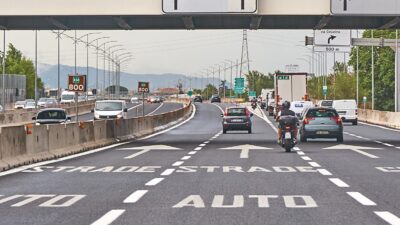Destination unknown: airport regulation in the wake of COVID-19
The COVID-19 pandemic has had a severe impact on public health, and significant and far-reaching effects across most sectors of the economy. Given the current global travel restrictions, with most of the world’s population living in countries with some form of travel ban or restriction, aviation has been one of the most dramatically affected sectors. What long-term effects will this have on the sector, and what are the implications for economic regulation?
After a number of years of strong traffic growth,1 the body that represents airports in Europe, ACI EUROPE, has reported that by the end of March 2020 daily passenger traffic across Europe was down 97% relative to the same time last year.2 Passenger traffic at airports of all types and sizes is affected, leading to an unprecedented loss of aeronautical and non-aeronautical revenue.
The aviation industry has been forced to take drastic action in the short term in a bid to protect cash flows and remain solvent. This has included: scaling back services to reduce operating costs;3 putting a hold on capital investment; raising additional finance from capital markets;4 and seeking financial support from governments.
To facilitate these measures, longstanding rules and regulations have been amended or (temporarily) overturned. The European Commission has suspended its ‘use-it-or-lose-it’ rule, which requires airlines to use 80% of their take-off and landing slots in order to keep them the following year.5 Norway has announced the removal of aviation taxes and the exemption of the airline industry from its competition and merger legislation.6 The European Commission has also responded to the crisis by providing guidance to member states and companies about the channels that state authorities can use to provide support, with specific guidance for the transport sector.7
Despite the actions that have been taken, airlines, airports and air navigation service providers are in a precarious position. Airports still have significant fixed costs and need to continue to service their debt. Most will be in breach of (EBITDA-based) debt covenants. Many airlines, operating on thin margins and in some instances already in financial difficulties prior to the pandemic, will not have the cash reserves to withstand a long period of inactivity.
This crisis will have major impacts on all parts of the aviation value chain. In addition to the short-term actions that are required, it is relevant to consider what changes might be needed in the medium and longer term. In this article, we focus on one aspect—how economic regulation might need to adapt to address the challenges raised by the coronavirus pandemic.
What does the future hold?
In order to determine the implications for airports regulation going forward, we first briefly consider the potential recovery path for the sector.
Forecasting the medium- to long-run effect of COVID-19 on the aviation industry is difficult. Previous shocks over the last few decades, such as 9/11, SARS, the Icelandic volcanic ash cloud, and the 2008 financial crisis have seen varying recovery profiles. In some cases, passenger traffic recovered over a period of months. For example, according to the International Air Transport Association (IATA), ‘previous disease outbreaks have peaked after 1-3 months and recovered pre-outbreak levels in 6-7 months.’8 In other cases, traffic has taken a while to bounce back. In the UK, it took nine years for passenger traffic to return to 2007 levels following the 2008 financial crisis.9
The unprecedented nature of the current pandemic may mean that the recovery profiles from these previous shocks are not a useful guide here. In the current situation, the shape of the passenger demand recovery depends on a variety of factors that are currently difficult to predict.
- How quickly travel restrictions and social distancing measures are lifted. The speed of recovery may differ for different types of travel—for example, domestic passenger traffic may see a faster recovery than international passenger traffic. It may also differ by region, with greater impacts in countries where COVID-19 is longer-lasting or where there are a significant number of cases.
- Potential ‘structural breaks’ caused by changing attitudes to air travel. The impact of this shock could be so severe and prolonged that there is the potential that it could lead to a more fundamental shift in behaviours with respect to air travel. For example, we may see changes in businesses’ travel policies or changes in individuals’ behaviour if the current restrictions highlight the environmental benefits of reduced air travel.
- The wider macroeconomic impact of the pandemic and the effect on income. Unlike a number of the previous shocks caused by disease outbreaks, the current crisis is likely to be accompanied by a deep recession. The IMF has forecast that Italy and Spain, two European countries that have been significantly affected by COVID-19 and which together account for 34% of air travel in the EU,10 will see annual GDP decline by 9.1% and 8% respectively in 2020. Indeed, forecasters across many countries are expecting a period of lower GDP and high unemployment. This is likely to affect people’s willingness and ability to travel, as passenger traffic is typically sensitive to GDP growth.
Consequently, there is a high degree of uncertainty around current traffic forecasts. There is, however, broad acceptance that air traffic will take some time to recover to 2019 levels.
Implications for airport regulation
The impact of the coronavirus on the aviation sector also raises questions about whether the current form of economic regulation for airports is fit for purpose, and if not, how regulation may need to adapt.
Charges at a number of European airports are set by regulators according to a regulated asset base (RAB) model (as explained further below). This approach uses forecasts of an airport’s costs and traffic, typically over a five-year period, in order to set a profile of charges for the airport.
For airports that are currently in the middle of a regulatory period, there is likely to be a need to reopen, amend or relax the price control settlement, as the assumptions previously adopted with respect to traffic, operating costs, capital costs and service levels will no longer be consistent with reality.
At other airports, such as Brussels Airport and Aéroports de Paris, charges were about to be reset for the next five-year period. It is likely that the start of the next regulatory period will be delayed, and that new business plans will need to be prepared and revised forecasts adopted. Other reviews, such as the Autorità di Regolazione dei Trasporti’s (ART) review of the future regulatory framework for Italian airports, have also been delayed.
Beyond changes in timing and process in ongoing price controls and regulatory reviews, the coronavirus pandemic raises a wider question about whether these types of regulatory regime are fit for purpose. Is a broader rethink of the regulatory model required?
Is the RAB model fit for purpose?
The RAB model is widely used in the regulation of utilities. It effectively provides the regulated company with assurance that it will recover its efficient expenditure—including capital investment, the value of which is captured in the RAB—plus a fair rate of return (WACC) if it meets its regulatory targets. Such models are therefore generally seen to support investment in capital-intensive industries.11
Regulatory frameworks based on the RAB model typically rely on forecasts, which companies are incentivised to outperform. They also often have some protections built in to allow for changing circumstances over the course of the control period—such as risk-sharing mechanisms or full reopeners in case of material unforeseen circumstances.
The RAB model has underpinned the regulation of many industries for over 25 years, and it has been well suited to sectors (such as wholesale water) where demand is relatively stable and/or predictable over time.
However, the COVID-19 pandemic highlights difficulties with setting RAB-based price caps in an industry where demand is more variable or subject to periodic ‘high-impact’ shocks. There are two main problems here.
- Uncertainty about the optimal price. In the airports sector, traffic forecasts are a critical input into the determination of charges, both as an important driver of cost forecasts, and because allowed revenue is divided by forecast traffic to determine a maximum charge per passenger. Therefore, if there is a high degree of uncertainty regarding future traffic, there is a high risk of getting the price control settlement wrong. This can lead to large swings in profitability for the regulated company, depending on how outturn traffic compares against the forecast. If forecasts are too optimistic and outturn traffic is well below forecast, this may create financeability issues. Conversely, if outturn traffic exceeds forecasts, prices may be above the efficient level.
- High volatility of prices to demand shocks. Even if traffic could be accurately forecast, the RAB model might not lead to optimal outcomes in the wake of a demand shock. While it is not clear exactly how and when passenger traffic will re-emerge from the current pandemic, when it does, it is likely to do so gradually over a period of months, or even years. Given that airports have high fixed costs that do not change as volumes change, applying a RAB–WACC model at an airport that has had a significant reduction in traffic will point to a sharp increase in charges. This could mean that charges rise to a level that the airline market is unable to sustain and which passengers are unlikely to pay for. There needs to be a balance between the financial resilience of the airport and the affordability of the services offered, but there is a risk that the RAB model will get this balance wrong at exactly the point when the industry is trying to recover.
Potential adjustments to the RAB model
Given the above, if regulators are to continue using RAB-based models or similar price control mechanisms in future, there are a number of aspects that will need to be considered in order to make sure that they are fit for purpose.
- Smoothing prices during the recovery period. To avoid the issues set out above, with prices first spiking and then easing as traffic recovers, regulators may need to consider mechanisms to smooth the price trajectory. There are a number ways that this could be achieved—for example, by altering the depreciation profile (e.g. using unitary depreciation) or by capitalising a greater proportion of spend to be recovered in the future. The latter approach has been used in the context of the development of the Northern Ireland gas distribution network. In this case, it was recognised that the high fixed costs of constructing the network would initially be shared across a small customer base, and that over time, as network usage increased, the resultant economies of scale would lead to a declining price. A ‘profile adjustment’ was used to smooth out prices. This effectively involved the networks charging below the cost-reflective price in early years, while network utilisation was low, and capitalising these deferred revenues (in the RAB) so that they could be recovered in future years when volumes were higher.
- Sharing risks between airports and users. As discussed above, where airports take full traffic risk the uncertainty over traffic volumes could lead to large gains or losses depending on how actual traffic performs relative to forecasts. One way of dealing with this would be through increased use of traffic risk-sharing mechanisms, as are already applied at some airports (e.g. Aéroports de Paris and Aeroporti di Roma), although there is also likely to be limited appetite among airlines to bear (a proportion of) this risk.
- The treatment of capital expenditure. Given that the speed of recovery is hard to predict, existing capital plans may need to be revised. Airports and regulators will need to come to a view on whether projects should still proceed, whether construction should be delayed, and how costs should be recovered from users. There will need to be a balance between not impeding beneficial investment, and avoiding a situation in which current and future users pay for investment that is not required.
- Incentivising performance. Most RAB-based regimes impose other constraints on airports in addition to capping prices. For example, many airports (e.g. Dublin Airport, Aena) are subject to service quality regimes in which they are penalised if they do not meet certain service quality targets (in some cases, they are also rewarded if they exceed these targets). Many of the targets in these regimes relate to the availability of equipment (e.g. baggage carousels) or aspects such as wait time at security and immigration. These targets may not be relevant when the airport is operating significantly below its expected capacity or if new pandemic-related operational procedures are introduced. As such, these targets may need to be revised or relaxed to maintain the operational resilience of the airport, while still ensuring compliance with some form of basic standards.
- Ensuring that there is appropriate flexibility as circumstances evolve. This might mean, for example, lower-powered performance incentives and greater scope to flex capital investment programmes to ensure that investments are being made only as required. However, there may also need to be a greater degree of regulatory pragmatism in determining whether an airport is responding appropriately to the emerging situation, rather than sticking rigidly to the regulatory contract.
- Assessing the appropriate rate of return and whether the package is financeable. This will no doubt be a controversial area, but the unprecedented shock to demand will raise questions as to the required return for investors in the airports sector, and the steps that regulators should take to ensure that airports are financially resilient to similar shocks in the future. Related to this is the question of whether airports and their regulators will need to take a different view on capital structures—in particular, whether regulators will seek to impose gearing limits to reduce the risk of financial distress.
A more radical alternative?
The alternative is a more fundamental regulatory rethink. This could involve moving away from the RAB approach to more market-based solutions, such as commercial agreements between airports and airlines in the initial recovery period, or perhaps more permanently. Allowing airports and airlines to form agreements with one another could help to ensure balanced solutions between cost-cutting and lower charges in the short run, and longer-term infrastructure requirements. If there are any major shocks, airports with long-term agreements in place with airlines can use clauses in their contracts to renegotiate.
There are existing examples of negotiation-based regimes in Europe (e.g. at Copenhagen and Gatwick airports), and there is also precedent for moving to such an approach in recognition of the limitations of the RAB model to deal with demand shocks. After 9/11, the Australian Productivity Commission recommended a change from a price cap regime to commercial negotiation regimes for Australian airports, recognising the difficulty in setting a robust price cap and the degree of regulatory risk:
If airport operators themselves cannot predict what will happen over the next few months or years, regulators are unlikely to be able to fix price caps that can deal efficiently with future market conditions.12
Price caps were discontinued in 2002, and charges have since been determined through negotiations between airlines and airports, conducted according to a set of formalised pricing principles and with monitoring by the Australian Competition and Consumer Commission (ACCC). This regime was recently reviewed by the Productivity Commission, which concluded that it remained fit for purpose.13
In addition to considering a change in the regulatory regime, there may be renewed questions about whether regulation is required at all, or whether less-intrusive regulation could be implemented, particularly as governments provide more support to the sector. On the other hand, the crisis may raise interesting questions about the degree of market power held by airports, and it is likely that airports’ responses during and after the crisis will be scrutinised in terms of whether there is evidence of market power.
1 Passenger traffic in Europe grew by 6.1% in 2018 and 3.2% in 2019. ACI Europe (2020), ‘European airports report slower passenger growth & declining freight in 2019’, 13 February.
2 ACI Europe (2020), ‘European Airports’ Passenger Traffic in March 2020’, April.
3 For example, airlines have cancelled large chunks of their flight schedules, and airports have closed runways and terminal buildings. Some have ceased operating entirely for the time being—easyJet has grounded its entire fleet for at least two months, and some airports (e.g. London City) have initiated temporary closures.
4 For example, Italy has nationalised Alitalia to prevent bankruptcy, while Denmark has received European Commission approval for a public guarantee of up to €137m to compensate SAS for the damage suffered due to the pandemic. The Commission has also approved a scheme allowing Charleroi and Liège airports to defer the payment of concession fees to the government.
5 The rule has been suspended until 24 October 2020.
6 Norwegian Government Security and Service Organisation (2020), ‘Regjeringens strakstiltak for å dempe de økonomiske virkningene av koronaviruset’, press release no. 45/20, 13 March.
7 Oxera (2020), ‘A practical guide to the state aid rules to tackle the impact of COVID-19’, Today’s Agenda, April.
8 IATA Economics (2020), ‘COVID-19 Initial impact assessment of the novel Coronavirus’, 20 February.
9 Based on Civil Aviation Authority, ‘UK airport data’.
10 Eurostat (2018), ‘Overview of EU-28 air passenger transport by Member States in 2018, passengers carried’.
11 For example, see Stern, J. (2014), ‘The regulatory asset base and regulatory commitment’, Agenda, February.
12 Productivity Commission (2002), ‘Price Regulation of Airport Services’, inquiry report no. 19, 23 January, p. XLIII.
13 Productivity Commission (2019), ‘Economic Regulation of Airports’, Inquiry report no. 92, 21 June.
Download
Contact

Christopher Davis
PrincipalContributors
Related
Download
Related

The European growth problem and what to do about it
European growth is insufficient to improve lives in the ways that citizens would like. We use the UK as a case study to assess the scale of the growth problem, underlying causes, official responses and what else might be done to improve the situation. We suggest that capital market… Read More

The 2023 annual law on the market and competition: new developments for motorway concessions in Italy
With the 2023 annual law on the market and competition (Legge annuale per il mercato e la concorrenza 2023), the Italian government introduced several innovations across various sectors, including motorway concessions. Specifically, as regards the latter, the provisions reflect the objectives of greater transparency and competition when awarding motorway concessions,… Read More
